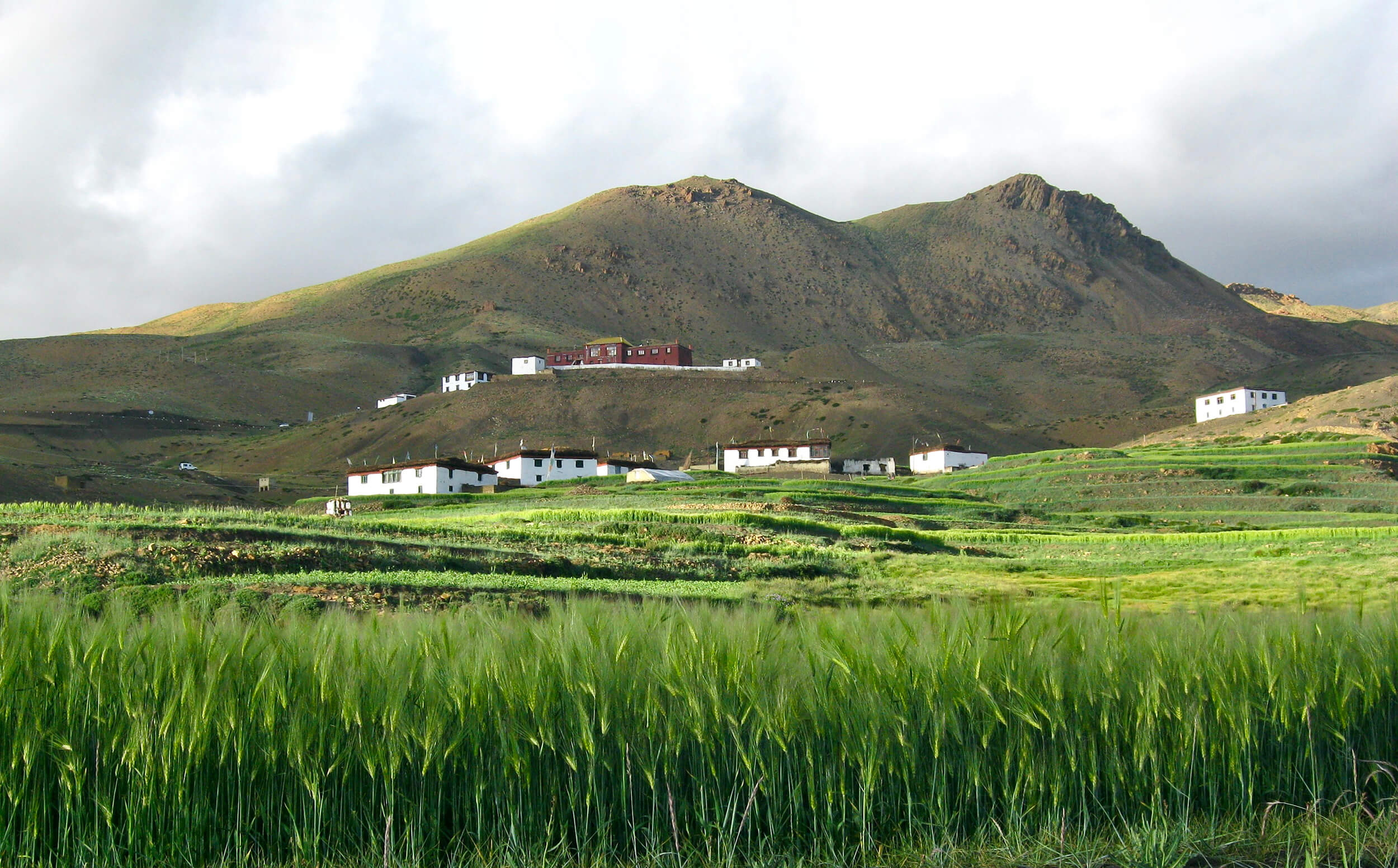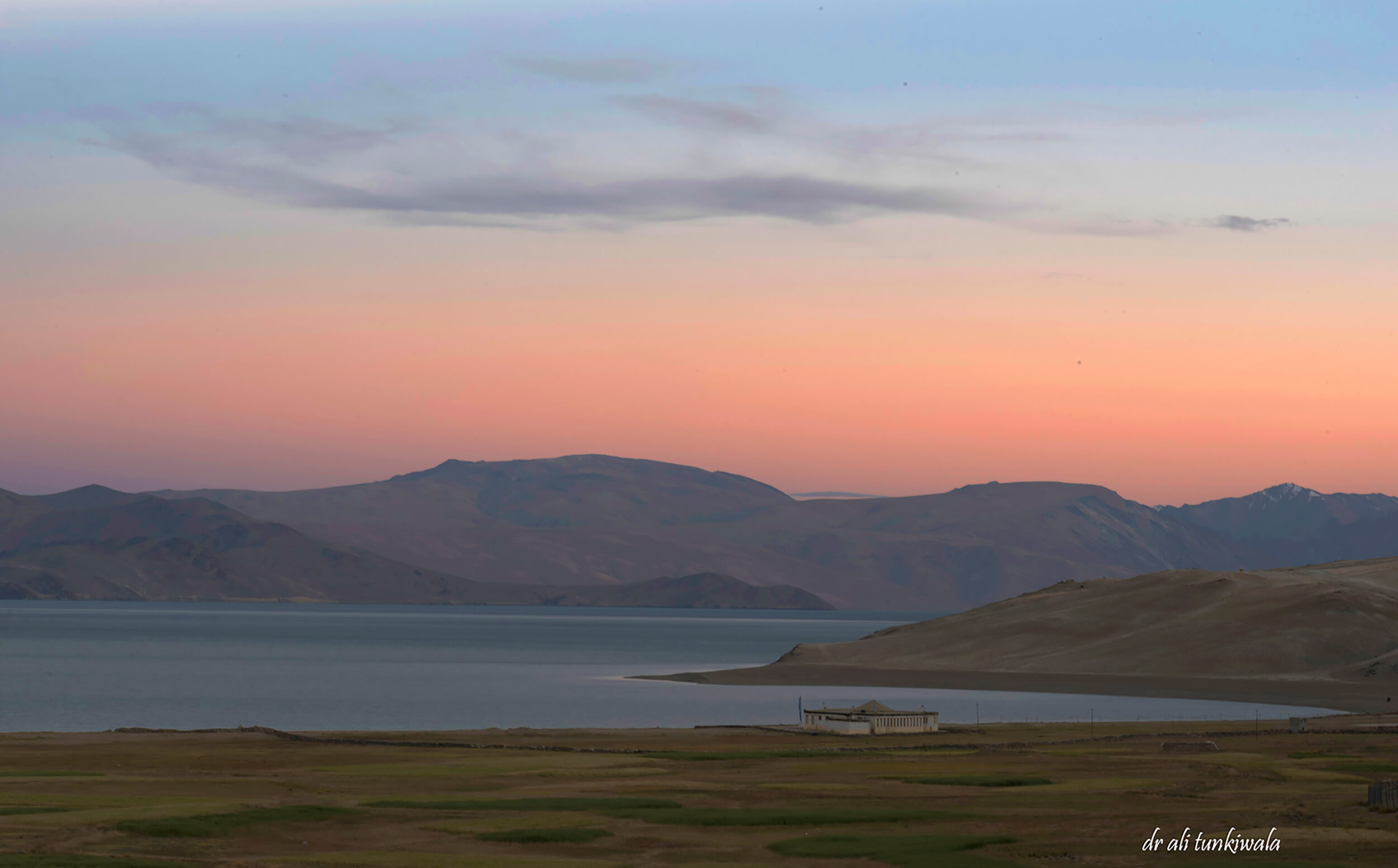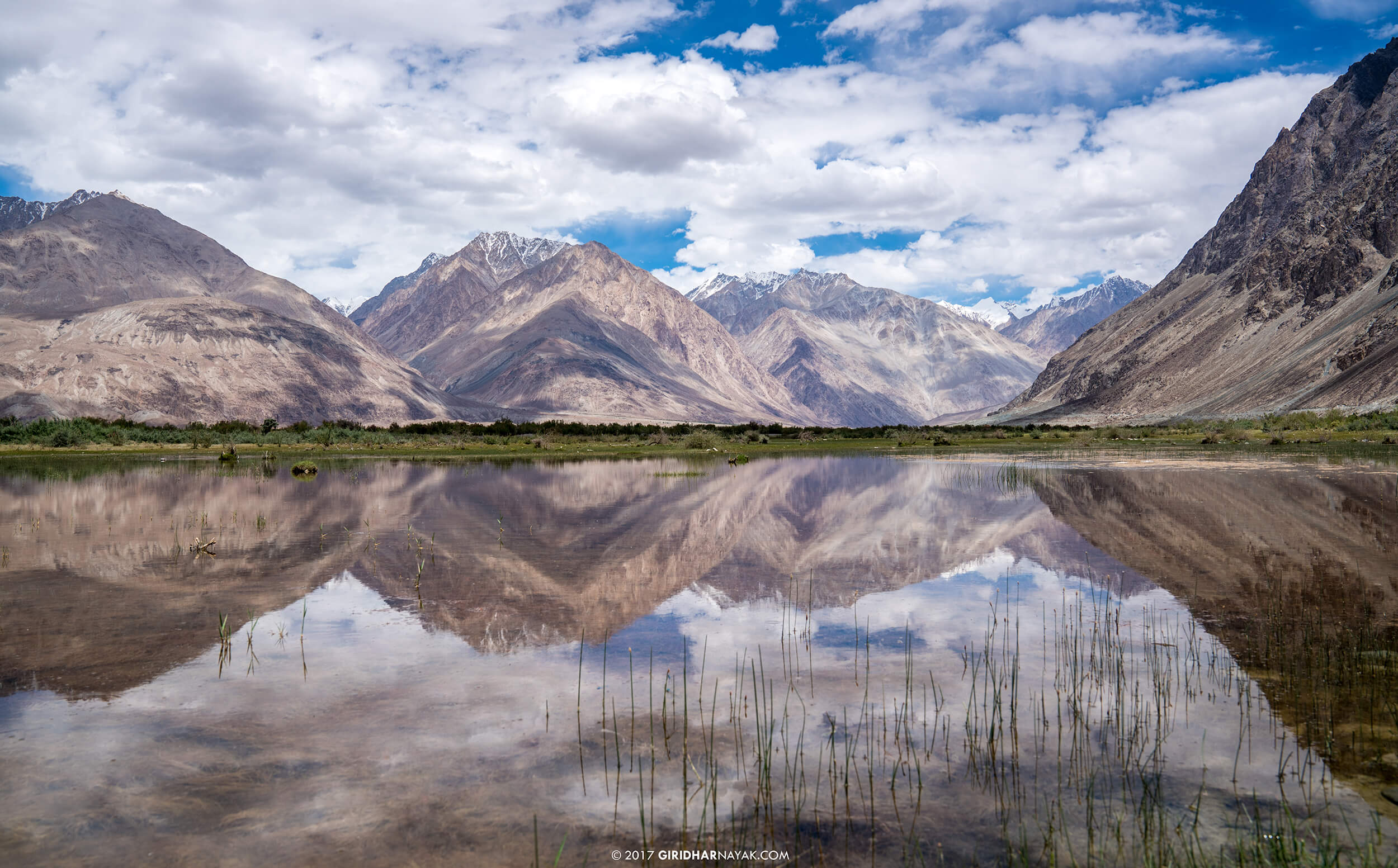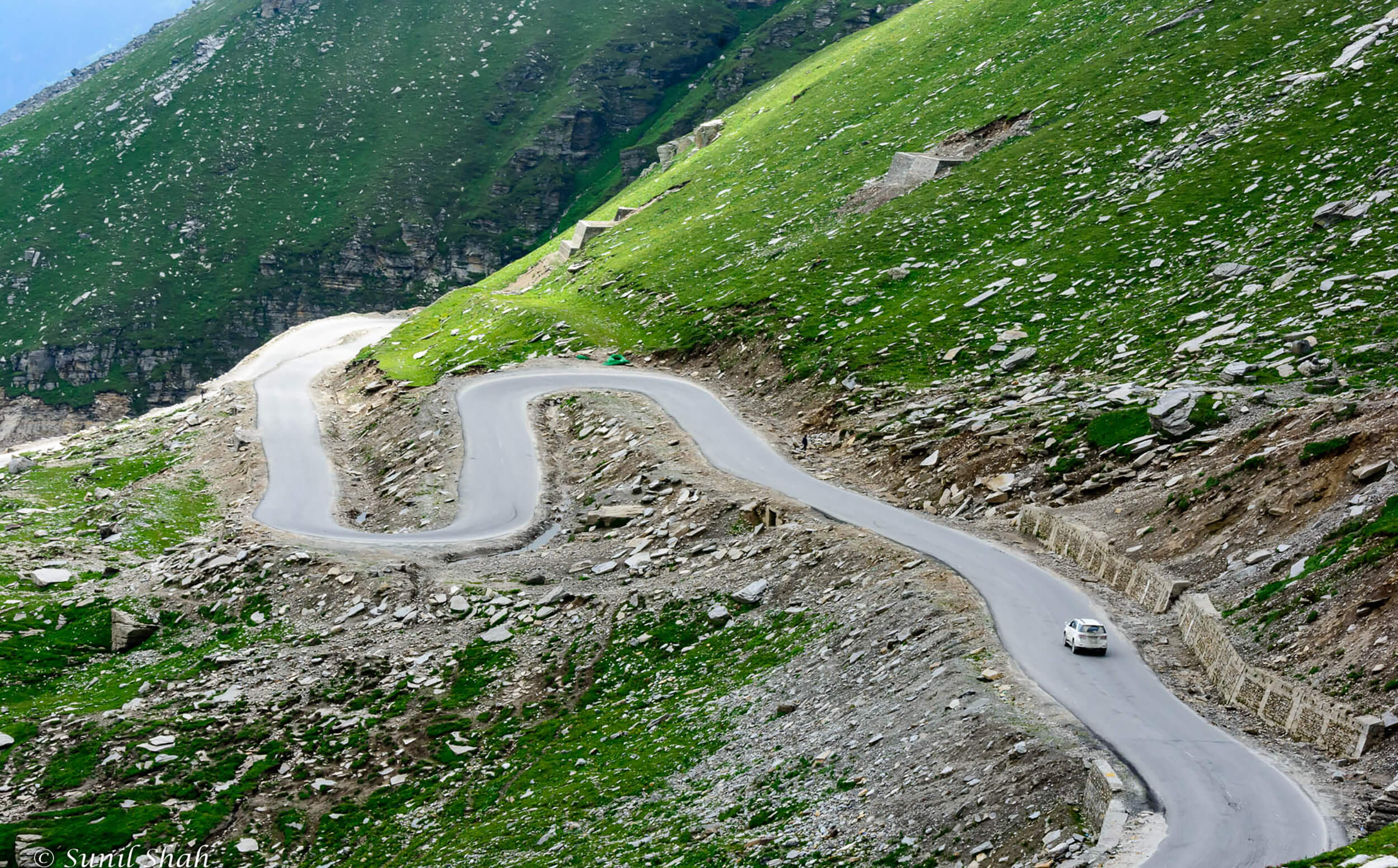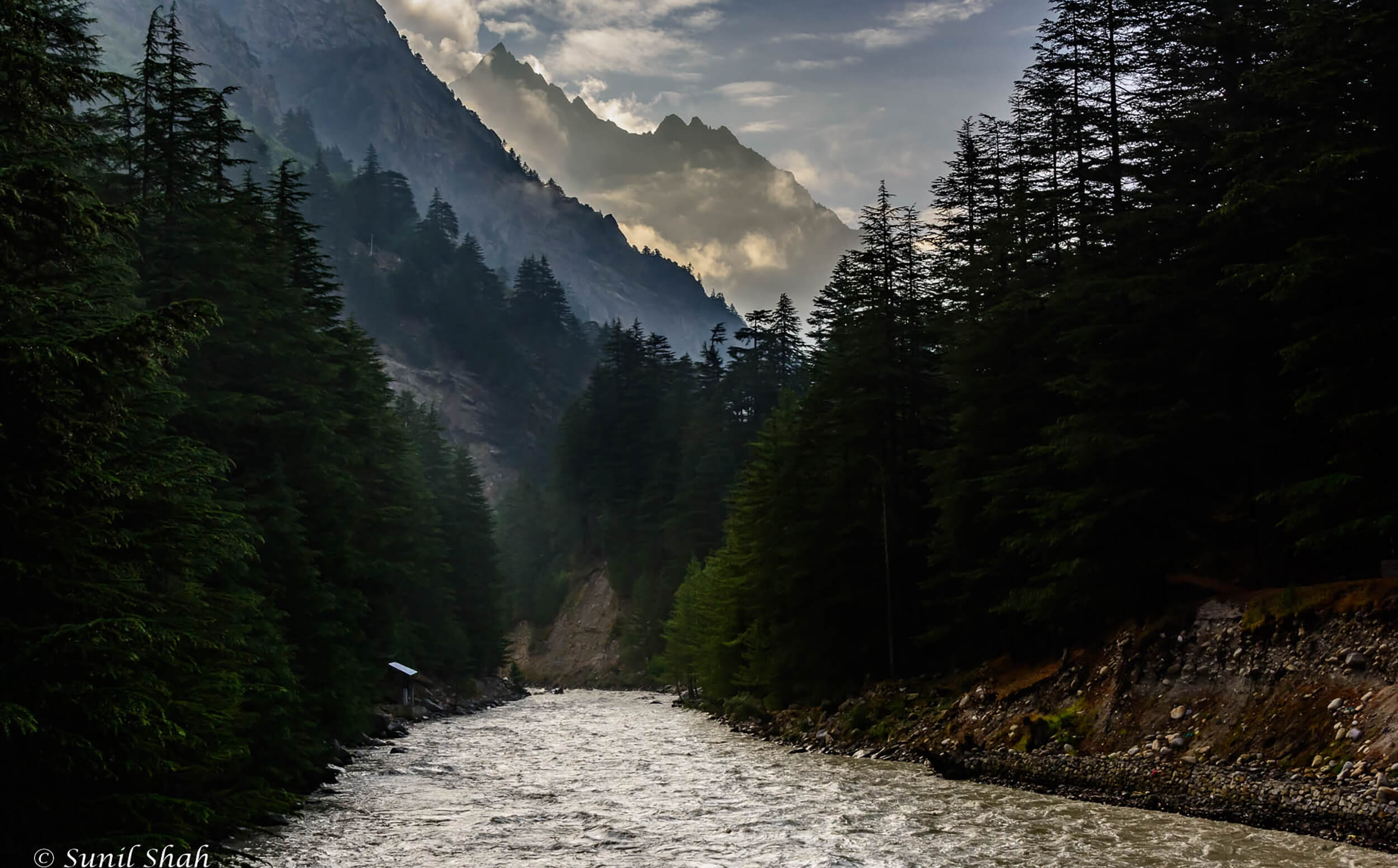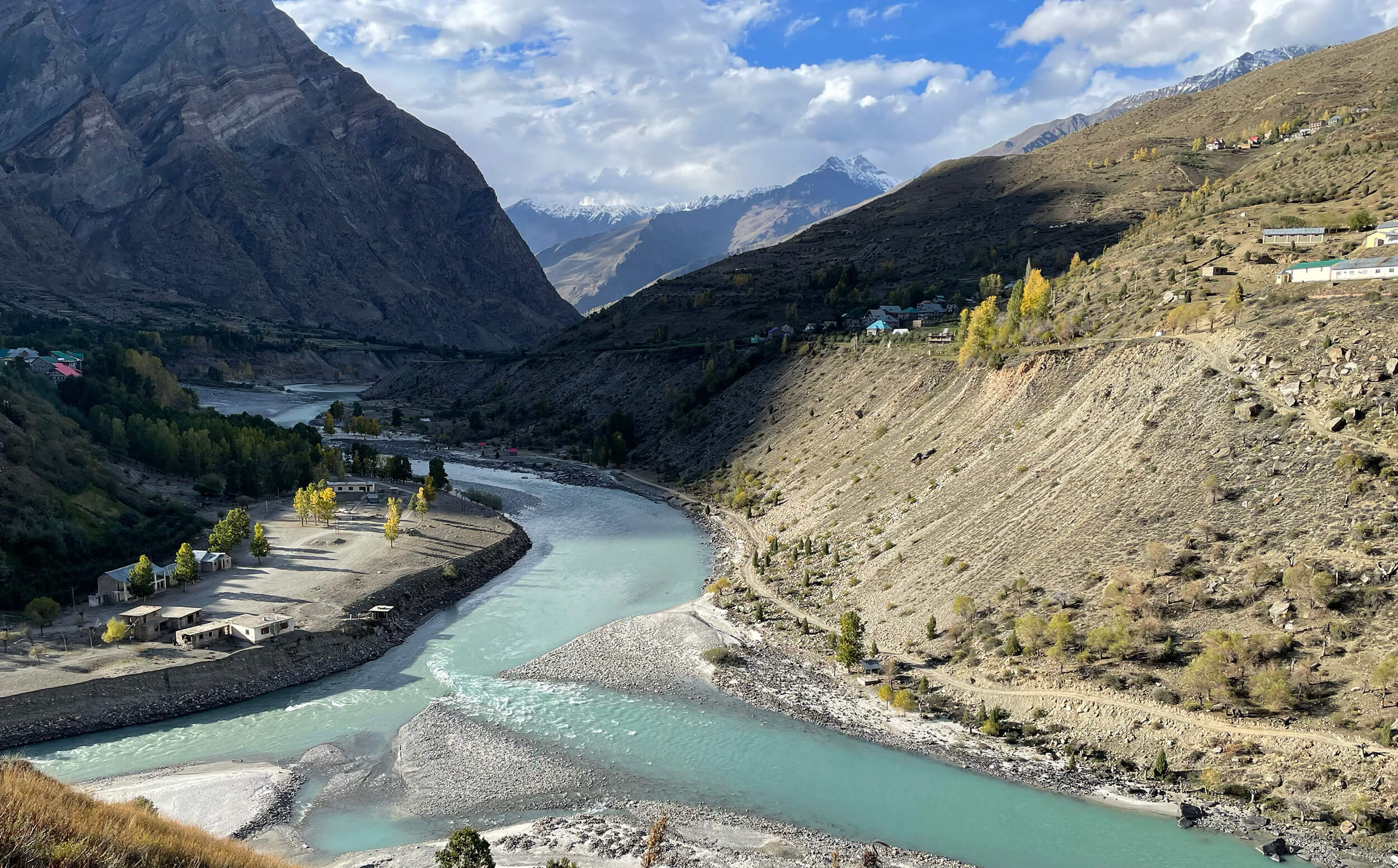Spiti A Winter Wonderland
- Ex Shimla
5N/6D
Duration
November to April
Best time to visit
Dinner and Breakfast
Meals provided
Hotels or Homestays or Camps
Stay provided
Local experienced driver
Transport
Embark on a journey to Kinnaur and Spiti, where the landscapes are cloaked in snow, the monasteries stand as serene sanctuaries, and the spirit of adventure thrives amid the chilly wilderness.
As this is a short trip, meant for those strapped for time, it is bound to be a bit hectic with long travel days.
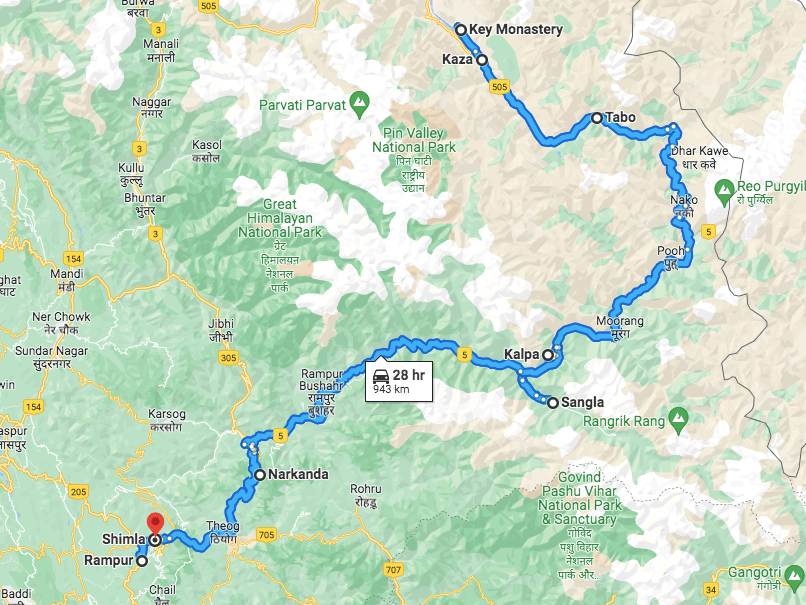
Places Covered
- Narkanda
- Rampur
- Sangla
- Rakcham
- Chitkul
- Kalpa
- Khab
- Nako
- Gue
- Tabo
- Pin Valley (Mudh)
- Dhankar
- Kye
- Khibber
- Chicham
- Langza
- Hikkim
- Komic
The remote, tribal regions of Kinnaur and Spiti, often overshadowed by their more accessible summer counterparts, reveal a different kind of charm in the colder months.
You’ll experience:
- The apple belt of Himachal – Famous for Hatu Peak and Temple (2708 m)
- The Uninterrupted view of the Kinner Kailash peaks in Kalpa. (2960 m)
- Picturesque Nako Lake (3600 m)
- The perfectly well-preserved 593-year-old mummy at Gue (3200 m)
- Ancient monasteries with intricate murals at Tabo and Dhankar
- Highest motorable villages like Komic (4,587 m)
- Highest post office in the world at Hikkim (4,400 m)
- World’s highest bridge from sea level at Chicham (4,037 m)
- A fossil village at Langza (4,420 m)
- A breathtaking hike to Dhankar Lake (4,140 m)
- Local scenic beauty including wooden architecture, ancient temples & lovely meadows in Sangla
- Chitkul – Most famous as the last village on the old handstand – tibet route (3450 m)

| Day | Day Plan | Travel Time |
| Day 1 | Shimla to Kalpa via Narkanda, Hatu Peak,Temple, Rampur | 7-8 hrs |
| Day 2 | Kalpa to Tabo via Khab, Nako & Gue | 6-7 hrs |
| Day 3 | Tabo to Kaza via Dhankar & Pin Valley (Mudh, Khungri) | 4-5 hrs |
| Day 4 | Kaza to Kye, Khibber, Chicham, Langza, Hikkim Post Office, Komic & Back | 5-6 hrs |
| Day 5 | Kaza to Sangla via Nako | 7-8 hrs |
| Day 6 | Sangla to Shimla via Rakcham, Chitkul. Trip ends | 8-9 hrs |
| Add 1 day to break Day 4 into 2 excursions |
- It gets very cold in winter i.e. December through February with temperatures hitting – 30C. You will need to be mentally and physically fit and must have done some high altitude travel in order to be able to handle traveling through this high altitude terrain.
- All hotels and guest houses will be shut at the time and you will only get homestays which have dry eco friendly squatting toilets. You will need to be okay with this as wet toilets are not available due to water lines freezing.
- Because of the water lines freezing, the locals need to carry the water all the way in the freezing cold from a nearby water source and hence having a bath while you are in Spiti will not be possible.
- In peak winter i.e. January and early February all the places might not be open due to adverse weather conditions. We will keep you updated on the same in case any last minute changes need to be made to your plan.
- Winter time is off season in Spiti, and you will not have many options in terms of activities, and because of the cold, you won’t be able to move around as much and will end up spending time in the homestay. We recommend travelers make the most of the situation, and turn their time at the homestay to getting to know more about Spitian life, food and culture from the locals.
- Because of winter, there will not be many options in terms of food and in a homestay you will need to be understanding and eat the hearty but basic food that your hosts provide.
- Be prepared to be understanding and flexible, as we can make last minute plan changes due to bad weather for your safety and wellbeing.
Your trip includes:
- Breakfast and Dinner as per the plan
- Transport and experienced local driver as per the plan
- Stay at the list of hotels shared as per the plan
- Driver to act as a basic guide
- All expenses for the driver are paid for, including all tolls, fuel, meals and accommodation
- Local coordinator in Kaza to handle your trip
Your trip excludes:
- 5% GST
- Lunch, snacks and beverages (except the ones with meals)
- Any kind of insurance/ emergency and evacuation cost
- Local Guide
- Bus ticket cost/Monument Entry fee/Cost of permits
As this is a cold desert, the weather varies throughout the day.
Here is the ultimate packing list for your Spiti trip.
- Shirt/t-shirt – 3-4
- Jeans/trekking pants – 2
- Windproof jacket of decent quality
- Thermals (upper and lower)
- Warm fleece/thick pullover – 2
- Woolen cap
- Woolen gloves
- Woolen socks
- Regular socks – 3-4 pair
- Scarf/muffler (optional)
- Comfortable hiking/training shoes
- Floaters/sandals/chappals
- Water bottle
- Cap/hat
- Sunglasses
- Sunscreen
- Lip balm
- Moisturizer
- Torch/flashlight
- Daypack/small backpack to carry it with you every day
- Camera with extra batteries
- Battery bank
- Hot water bag
- Prescription medicines (if any)
- Basic medicines (for headache, motion sickness, stomach issues etc)
- Trekking pole (optional)
The remote, tribal regions of Kinnaur and Spiti, often overshadowed by their more accessible summer counterparts, reveal a different kind of charm in the colder months.
You’ll experience:
- The apple belt of Himachal – Famous for Hatu Peak and Temple (2708 m)
- The Uninterrupted view of the Kinner Kailash peaks in Kalpa. (2960 m)
- Picturesque Nako Lake (3600 m)
- The perfectly well-preserved 593-year-old mummy at Gue (3200 m)
- Ancient monasteries with intricate murals at Tabo and Dhankar
- Highest motorable villages like Komic (4,587 m)
- Highest post office in the world at Hikkim (4,400 m)
- World’s highest bridge from sea level at Chicham (4,037 m)
- A fossil village at Langza (4,420 m)
- A breathtaking hike to Dhankar Lake (4,140 m)
- Local scenic beauty including wooden architecture, ancient temples & lovely meadows in Sangla
- Chitkul – Most famous as the last village on the old handstand – tibet route (3450 m)

| Day | Day Plan | Travel Time |
| Day 1 | Shimla to Kalpa via Narkanda, Hatu Peak,Temple, Rampur | 7-8 hrs |
| Day 2 | Kalpa to Tabo via Khab, Nako & Gue | 6-7 hrs |
| Day 3 | Tabo to Kaza via Dhankar & Pin Valley (Mudh, Khungri) | 4-5 hrs |
| Day 4 | Kaza to Kye, Khibber, Chicham, Langza, Hikkim Post Office, Komic & Back | 5-6 hrs |
| Day 5 | Kaza to Sangla via Nako | 7-8 hrs |
| Day 6 | Sangla to Shimla via Rakcham, Chitkul. Trip ends | 8-9 hrs |
| Add 1 day to break Day 4 into 2 excursions |
- It gets very cold in winter i.e. December through February with temperatures hitting – 30C. You will need to be mentally and physically fit and must have done some high altitude travel in order to be able to handle traveling through this high altitude terrain.
- All hotels and guest houses will be shut at the time and you will only get homestays which have dry eco friendly squatting toilets. You will need to be okay with this as wet toilets are not available due to water lines freezing.
- Because of the water lines freezing, the locals need to carry the water all the way in the freezing cold from a nearby water source and hence having a bath while you are in Spiti will not be possible.
- In peak winter i.e. January and early February all the places might not be open due to adverse weather conditions. We will keep you updated on the same in case any last minute changes need to be made to your plan.
- Winter time is off season in Spiti, and you will not have many options in terms of activities, and because of the cold, you won’t be able to move around as much and will end up spending time in the homestay. We recommend travelers make the most of the situation, and turn their time at the homestay to getting to know more about Spitian life, food and culture from the locals.
- Because of winter, there will not be many options in terms of food and in a homestay you will need to be understanding and eat the hearty but basic food that your hosts provide.
- Be prepared to be understanding and flexible, as we can make last minute plan changes due to bad weather for your safety and wellbeing.
Your trip includes:
- Breakfast and Dinner as per the plan
- Transport and experienced local driver as per the plan
- Stay at the list of hotels shared as per the plan
- Driver to act as a basic guide
- All expenses for the driver are paid for, including all tolls, fuel, meals and accommodation
- Local coordinator in Kaza to handle your trip
Your trip excludes:
- 5% GST
- Lunch, snacks and beverages (except the ones with meals)
- Any kind of insurance/ emergency and evacuation cost
- Local Guide
- Bus ticket cost/Monument Entry fee/Cost of permits
As this is a cold desert, the weather varies throughout the day.
Here is the ultimate packing list for your Spiti trip.
- Shirt/t-shirt – 3-4
- Jeans/trekking pants – 2
- Windproof jacket of decent quality
- Thermals (upper and lower)
- Warm fleece/thick pullover – 2
- Woolen cap
- Woolen gloves
- Woolen socks
- Regular socks – 3-4 pair
- Scarf/muffler (optional)
- Comfortable hiking/training shoes
- Floaters/sandals/chappals
- Water bottle
- Cap/hat
- Sunglasses
- Sunscreen
- Lip balm
- Moisturizer
- Torch/flashlight
- Daypack/small backpack to carry it with you every day
- Camera with extra batteries
- Battery bank
- Hot water bag
- Prescription medicines (if any)
- Basic medicines (for headache, motion sickness, stomach issues etc)
- Trekking pole (optional)
Detailed itinerary
Related Tours
- Ex Chandigarh
- 9 Nights and 10 Days
- Best time to visit: May to October
- Ex Manali
- 7 Nights and 8 Days
- Best time to visit: May to October
- Srinagar Fly In - Leh Fly Out
- 7 Nights and 8 Days
- Best time to visit: April to October
- Ex Leh Airport
- 6 Nights and 7 Days
- Best time to visit: April to October
- Ex Chandigarh
- 6 Nights and 7 Days
- Best time to visit: All year round
- Ex Chandigarh
- 6 Nights and 7 Days
- Best time to visit: All year round
- Ex Chandigarh
- 5 Nights and 6 Days
- Best time to visit: May to November



